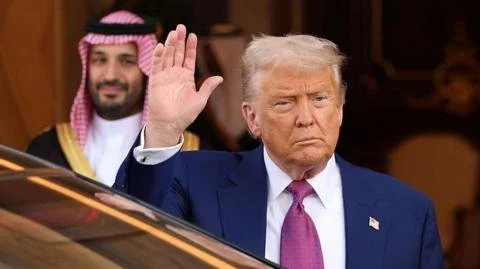$2 Trillion Mirage: The Truth Behind Trump's Gulf Investment Claims
President Donald Trump recently declared his Gulf trip a historic success, claiming to have secured over $2 trillion in investments for the US during visits to Saudi Arabia, Qatar, and the UAE. This trip was marked by exquisite pageantry and significant diplomatic ceremonies, including being awarded the Order of Zayed, the UAE’s highest civilian honor.
The Saudi Crown Prince, Mohammed bin Salman, pledged to invest $600 billion in US-Saudi partnerships, emphasizing collaborative projects in arms, AI, healthcare, and infrastructure. Among these, a $142 billion defense deal was highlighted as the largest arms deal ever brokered. However, skepticism about the actual realization of these figures remains, especially considering that previous promises from Trump’s first term reportedly totalled $450 billion, with actual follow-through being significantly less, around $300 billion.
In Qatar, a supposed $1.2 trillion economic exchange was touted, yet official documentation only confirmed deals worth $243.5 billion, which included a significant order of up to 210 Boeing jets. Furthermore, the UAE plans to invest in a massive AI campus, reinforcing the shift in US-Gulf relations from traditional oil dependence to a focus on economic partnerships and technology.
A critical factor affecting these ambitious claims is the fluctuating oil prices, which have recently plummeted, putting additional financial strain on Saudi Arabia’s ability to meet its investment pledges. Current economic challenges, spurred by Trump’s trade tariffs, complicate the landscape, making the promised investments appear uncertain.
Moreover, many agreements signed during the trip were merely non-binding memorandums of understanding, which lack the enforceability of formal contracts, further clouding the prospects for substantial economic gains. Despite these concerns, analysts suggest this transformation in the US-Gulf partnership indicates a strategic collaboration aimed at preparing for a high-tech future, particularly centered on artificial intelligence.
In the end, both sides are framing the trip as a win—strengthening ties and strategic connections amid shifting geopolitical dynamics. Trump, on one hand, seeks to leverage these claims for his political narrative, while Gulf leaders aim to solidify their status on the global stage.

